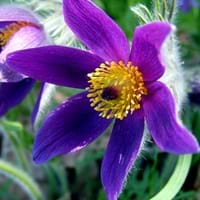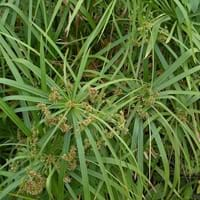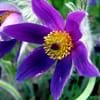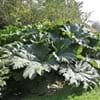Life Span
Annual and Perennial
Annual and Perennial
Type
Perennial
Sedge or Rush
Origin
Europe, Eastern Europe, Southern Europe, Western Europe, United Kingdom
Madagascar
Types
Pulsatilla vulgaris, Pulsatilla vulgaris rubra, Pulsatilla vulgaris alba
Not Available
Number of Varieties
Not Available
Habitat
meadows, Slopes, Wooded slopes
Temperate Regions
USDA Hardiness Zone
5-7
8-11
Sunset Zone
2b, 3a, 3b, 4, 5, 6, 15, 16, 17
H1, H2, 8, 9, 12, 13, 14, 15, 16, 17, 18, 19, 20, 21, 22, 23, 24
Habit
Clump-Forming
Clump-Forming
Flower Color
Indigo, Purple, Violet
Yellow green, Brown
Flower Color Modifier
Not Available
Bicolor
Fruit Color
Greyish Brown
Non Fruiting Plant
Leaf Color in Spring
Light Green
Green, Dark Green
Leaf Color in Summer
Light Green
Dark Green
Leaf Color in Fall
Light Green
Dark Green
Leaf Color in Winter
Light Green
Dark Green
Leaf Shape
Rosette
Subulate
Plant Season
Spring
Spring, Summer, Fall, Winter
Sunlight
Full Sun
Full Sun, Partial Sun
Type of Soil
Loam, Sand
Clay, Loam, Sand
The pH of Soil
Neutral, Alkaline
Acidic, Neutral
Soil Drainage
Well drained
Poorly Drained
Bloom Time
Early Spring, Spring
Early Summer, Summer
Tolerances
Drought
Drought
Where to Plant?
Ground, Pot
Container, Ground, Pot
How to Plant?
root cutting, Seedlings
Cuttings
Plant Maintenance
Medium
Medium
Watering Requirements
Medium
Average Water Needs
In Summer
Lots of watering
Lots of watering
In Spring
Moderate
Moderate
In Winter
Average Water
Average Water
Soil pH
Neutral, Alkaline
Acidic, Neutral
Soil Type
Loam, Sand
Clay, Loam, Sand
Soil Drainage Capacity
Well drained
Poorly Drained
Sun Exposure
Full Sun
Full Sun, Partial Sun
Pruning
Remove damaged leaves, Remove dead branches, Remove dead leaves
Remove damaged leaves, Remove dead branches, Remove dead leaves
Fertilizers
All-Purpose Liquid Fertilizer
All-Purpose Liquid Fertilizer
Pests and Diseases
Cutworms, Larvae of Agave Weevil
Red spider mite, Spider mites
Plant Tolerance
Drought
Drought
Flowers
Showy
Insignificant
Flower Petal Number
Single
Single
Foliage Texture
Fine
Medium
Foliage Sheen
Matte
Glossy
Attracts
Not Available
Butterflies, Hummingbirds
Allergy
convulsions, Diarrhea, Not Available, Stomach pain, Vomiting
Not Available
Aesthetic Uses
along a porch, deck or patio, Showy Purposes
Showy Purposes
Beauty Benefits
Not Available
Not Available
Environmental Uses
Air purification
Air purification
Medicinal Uses
Not Available
Antibacterial, Antifungal
Part of Plant Used
Not Available
Root
Other Uses
Showy Purposes
Not Available
Used As Indoor Plant
No
Yes
Used As Outdoor Plant
Yes
Yes
Garden Design
Alpine, Mixed Border, Rock Garden / Wall
Bog Garden, Container, Cutflower, Feature Plant, Houseplant, Tropical, Water Gardens
Botanical Name
PULSATILLA vulgaris
Cyperus Alternifolius
Common Name
Pasque Flower, wind flower, prairie crocus, Easter Flower, meadow anemone
Umbrella Papyrus, Umbrella Sedge, Umbrella Palm, Umbrella Plant
In Hindi
Pasque Flower
Umbrella Plant
In German
Kuhschellen
Dach-Anlage
In French
Pasque Flower
Parapluie Plante
In Spanish
Pasque Flower
Umbrella Plant
In Greek
Pasque Flower
ομπρέλα φυτών
In Portuguese
Pasque Flower
Planta do guarda-chuva
In Polish
Sasanka
parasol roślin
In Latin
Pasque Flower
O Planta
Phylum
Vascular plant
Magnoliophyta
Class
Magnoliopsida
Liliopsida
Order
Ranunculales
Poales
Family
Ranunculaceae
Cyperaceae
Clade
Angiosperms, Eudicots
Angiosperms, Commelinids, Monocots
Subfamily
Not Available
Cyperoideae
Properties of Pasque Flower and Umbrella Sedge
Wondering what are the properties of Pasque Flower and Umbrella Sedge? We provide you with everything About Pasque Flower and Umbrella Sedge. Pasque Flower doesn't have thorns and Umbrella Sedge doesn't have thorns. Also Pasque Flower does not have fragrant flowers. Pasque Flower has allergic reactions like convulsions, Diarrhea, Not Available, Stomach pain and Vomiting and Umbrella Sedge has allergic reactions like convulsions, Diarrhea, Not Available, Stomach pain and Vomiting. Compare all the properties and characteristics of these two plants. Find out which of these plant can be used as indoor plant. If you are interested to decorate your house and garden, find out aesthetic uses, compare them and select the plant which will beautify your surrounding. Along with beautification, try comparing medicinal and edible uses of Pasque Flower and Umbrella Sedge and you can choose the plant having best and most benefits.
Season and Care of Pasque Flower and Umbrella Sedge
Season and care of Pasque Flower and Umbrella Sedge is important to know. While considering everything about Pasque Flower and Umbrella Sedge Care, growing season is an essential factor. Pasque Flower season is Spring and Umbrella Sedge season is Spring. The type of soil for Pasque Flower is Loam, Sand and for Umbrella Sedge is Clay, Loam, Sand while the PH of soil for Pasque Flower is Neutral, Alkaline and for Umbrella Sedge is Acidic, Neutral.
Pasque Flower and Umbrella Sedge Physical Information
Pasque Flower and Umbrella Sedge physical information is very important for comparison. Pasque Flower height is 12.70 cm and width 15.20 cm whereas Umbrella Sedge height is 45.70 cm and width 45.70 cm. The color specification of Pasque Flower and Umbrella Sedge are as follows:
Pasque Flower flower color: Indigo, Purple and Violet
Pasque Flower leaf color: Light Green
Umbrella Sedge flower color: Yellow green and Brown
- Umbrella Sedge leaf color: Green and Dark Green
Care of Pasque Flower and Umbrella Sedge
Care of Pasque Flower and Umbrella Sedge include pruning, fertilizers, watering etc. Pasque Flower pruning is done Remove damaged leaves, Remove dead branches and Remove dead leaves and Umbrella Sedge pruning is done Remove damaged leaves, Remove dead branches and Remove dead leaves. In summer Pasque Flower needs Lots of watering and in winter, it needs Average Water. Whereas, in summer Umbrella Sedge needs Lots of watering and in winter, it needs Average Water.





